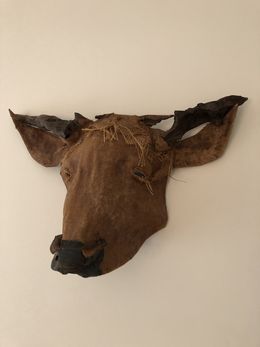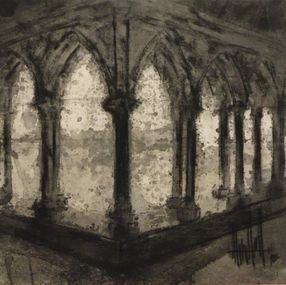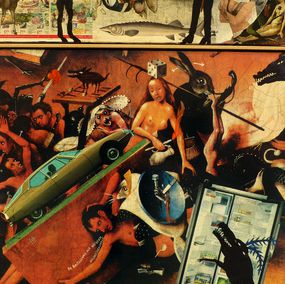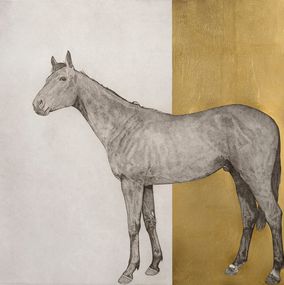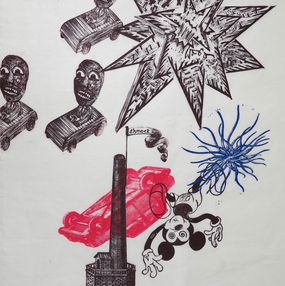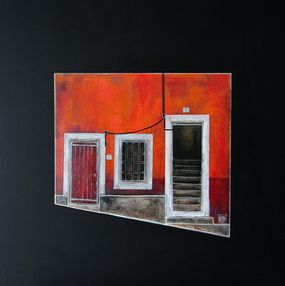
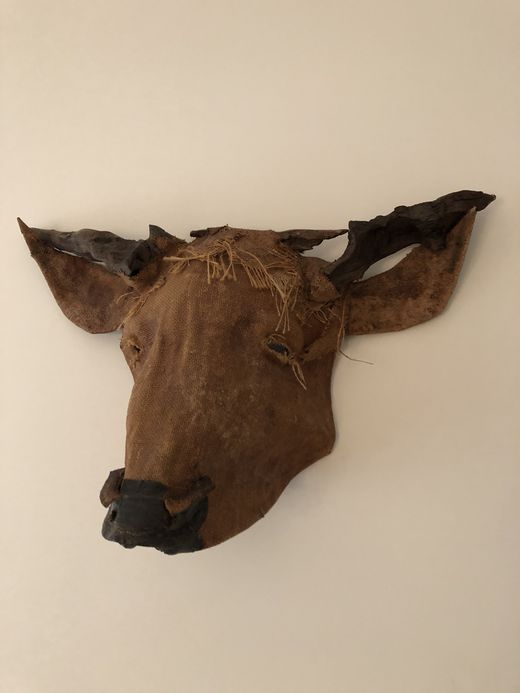
France
• 1960
Biography
Fabienne Blas discovered masks in 1981 at the "Carré Sylvia Monfort" in Paris with Donato Sartori's students and quickly became passionate about Dell'Arte commedia masks, alongside mime, theatre and dance classes.
Graduated in 1983 from the "Carré Sylvia Monfort", she joined various theatre companies the following year and created masks for the performing arts.
Since then, the masks have travelled with theatrical companies (Namur fairground theatre festival, Grenoble European theatre festival, Aurillac street theatre festival, Avignon festival, etc.)
In 1992, while continuing to create for the theatre, Fabienne decided to explore other "masked" horizons! So many discoveries, so many riches! In particular the carnivals of Europe and even more the tradition of masks from the Eastern countries (Slovenia, Hungary, Moldova...).
"It is an exciting research, here, a shepherd village, the masks are made of wool, there, in bark since wild men come out of the forest to hunt in winter, there again in feathers representing migratory birds that denounce the rural exodus, elsewhere in yarn and lace made by the women to welcome spring. All these signs must be interpreted and make the materials used obvious ».
From then on, her expression found other gestures and materials ( leather, straw, canvas, wood...) that responded to the wonderful traditions still very present in Europe but also to her desires for creation and her roots in the North.
Then her exhibitions "Bestiaire et Hommes Sauvages" were born in different cultural places, galleries and "historical places » such as the water festival in Auvergne, the Chapels of the white penitents of Mende and the penitents of Chaudes Aigues, or at the Château de Montvalat...
The parisian gallery, French Arts Factory, represents the artist since 2019
Read more
Graduated in 1983 from the "Carré Sylvia Monfort", she joined various theatre companies the following year and created masks for the performing arts.
Since then, the masks have travelled with theatrical companies (Namur fairground theatre festival, Grenoble European theatre festival, Aurillac street theatre festival, Avignon festival, etc.)
In 1992, while continuing to create for the theatre, Fabienne decided to explore other "masked" horizons! So many discoveries, so many riches! In particular the carnivals of Europe and even more the tradition of masks from the Eastern countries (Slovenia, Hungary, Moldova...).
"It is an exciting research, here, a shepherd village, the masks are made of wool, there, in bark since wild men come out of the forest to hunt in winter, there again in feathers representing migratory birds that denounce the rural exodus, elsewhere in yarn and lace made by the women to welcome spring. All these signs must be interpreted and make the materials used obvious ».
From then on, her expression found other gestures and materials ( leather, straw, canvas, wood...) that responded to the wonderful traditions still very present in Europe but also to her desires for creation and her roots in the North.
Then her exhibitions "Bestiaire et Hommes Sauvages" were born in different cultural places, galleries and "historical places » such as the water festival in Auvergne, the Chapels of the white penitents of Mende and the penitents of Chaudes Aigues, or at the Château de Montvalat...
The parisian gallery, French Arts Factory, represents the artist since 2019
Discover the movements linked to Fabienne Blas
Discover similar artists
Discover our selections of works by artists
Need help finding your favorite? Consult our selection pages made for you.
Need to know more?
What are their 3 main works?
When was Fabienne Blas born?
The year of birth of the artist is: 1960





